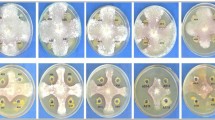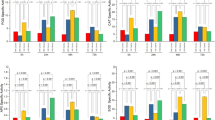Abstract
The occurrence of plant disease depends on interactions between the host plant, a pathogen, and the environment in a dynamic called "the disease triangle". Bacterial shoot blight (BSB) disease, caused by Pseudomonas syringae pv. theae (Pst), is a major bacterial disease of tea plants in Japan and substantially reduces tea productivity. BSB mainly occurs in the low-temperature season, and lesion formation by Pst is enhanced by both low temperature and the presence of ice nucleation-active Xanthomonas campestris (INAX), which catalyses ice formation at -2 to -4^o^C and is frequently co-isolated with Pst from tea plants^5^. Low temperature is thus the most important environmental factor to influence the incident; however, the effects of environmental controls in fields on the occurrence of the disease are poorly understood. Here we show that the natural incidence of BSB in the field is closely related to low temperatures in late autumn. Frost protection in late autumn, which protected tea plants against extremely low temperatures, significantly decreased the incidence of BSB, and frost protection combined with bactericide application held the incident under the economic threshold level. Our data indicate that environmental control in the field based on microbial interactions in the host offers a new strategy for plant disease control using integrated plant disease management based on the disease triangle concept.
Similar content being viewed by others
Article PDF
Author information
Authors and Affiliations
Corresponding author
Rights and permissions
About this article
Cite this article
Tomihama, T., Toshiyuki, N., Yatsuka, N. et al. Integrated disease management using environmental control in tea fields. Nat Prec (2008). https://doi.org/10.1038/npre.2008.1836.1
Received:
Accepted:
Published:
DOI: https://doi.org/10.1038/npre.2008.1836.1



